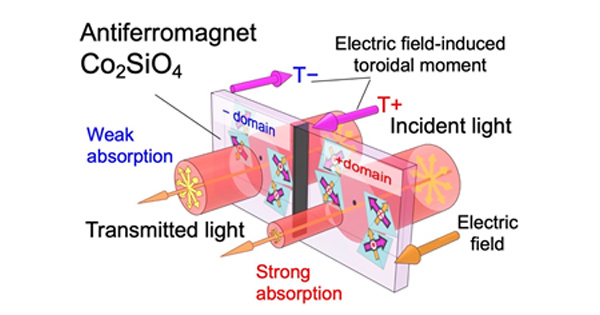Authors
Kentaro Shoriki, Keigo Moriishi, Yoshihiro Okamura, Kohei Yokoi, Hidetomo Usui, Hiroshi Murakawa, Hideaki Sakai, Noriaki Hanasaki, Yoshinori Tokura, Youtarou Takahashi
Abstract
Weyl semimetals resulting from either inversion (P) or time-reversal (T) symmetry breaking have been revealed to show the record-breaking large optical response due to intense Berry curvature of Weyl-node pairs. Different classes of Weyl semimetals with both P and T symmetry breaking potentially exhibit optical magnetoelectric (ME) responses, which are essentially distinct from the previously observed optical responses in conventional Weyl semimetals, leading to the versatile functions such as directional dependence for light propagation and gyrotropic effects. However, such optical ME phenomena of (semi)metallic systems have remained elusive so far. Here, we show the large nonlinear optical ME response in noncentrosymmetric magnetic Weyl semimetal PrAlGe, in which the polar structural asymmetry and ferromagnetic ordering break P and T symmetry. We observe the giant second harmonic generation (SHG) arising from the P symmetry breaking in the paramagnetic phase, being comparable to the largest SHG response reported in Weyl semimetal TaAs. In the ferromagnetically ordered phase, it is found that interference between this nonmagnetic SHG and the magnetically induced SHG emerging due to both P and T symmetry breaking results in the magnetic field switching of SHG intensity. Furthermore, such an interference effect critically depends on the light-propagating direction. The corresponding magnetically induced nonlinear susceptibility is significantly larger than the prototypical ME material, manifesting the existence of the strong nonlinear dynamical ME coupling. The present findings establish the unique optical functionality of P- and T-symmetry broken ME topological semimetals.
Proceedings of the National Academy of Sciences of the United States of America:
You May Also Like
These Related Stories
Giant magneto-optical responses in magnetic Weyl semimetal Co3Sn2S2

Unveiling a Novel Optical Phenomenon in an Antiferromagnet


